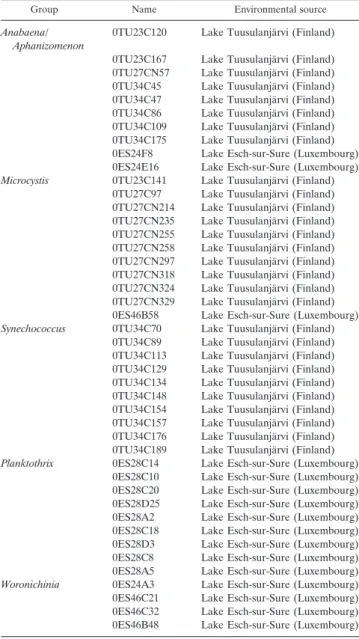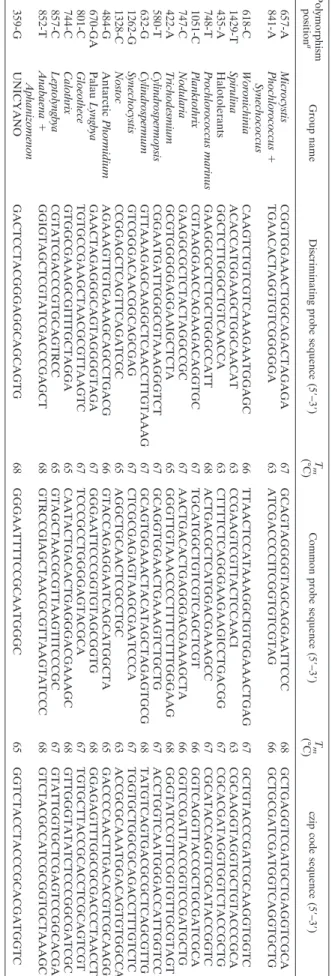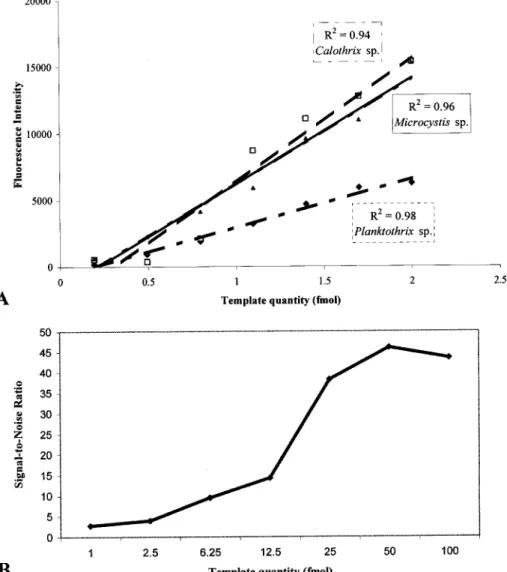Development of a universal microarray based on the ligation detection reaction and 16S rRNA gene polymorphism to target diversity of cyanobacteria
Texte intégral
Figure



Documents relatifs
Title: Specific identification of Gallibacterium by a PCR using primers targeting the 16S rRNA and 23S rRNA genes.. Authors: Anders Miki Bojesen, Maria
Detection and quantification of cellulolytic bacteria in the equine caecum using oligonucleotide probes targeting 16S rRNA... Detection and quantification of cellulolytic
Assessment of the impact of tebuconazol (fungicide) on lake and stream bacterial communities using a 16S rRNA pyrosequencing method.. Symposium on Aquatic Microbial
Calcul du Pourcentage (A) Réponses Calculez le pourcentage ou la valeur
[r]
Validity, sensitivity and resolution limit of the PCR-RFLP analysis of the rrs (16S rRNA gene) as a tool to identify soil-borne and plant-associated
Development of a fast and reliable diagnostic method for American foulbrood disease (Paenibacillus larvae subsp. larvae) using a 16S rRNA gene based
The synthesis of mesoporous silicas via the sol-gel process in the presence of structure- directing agents (P123 (PEO 20 PPO 70 PEO 20 )) and tetraethoxysilane (TEOS) led to